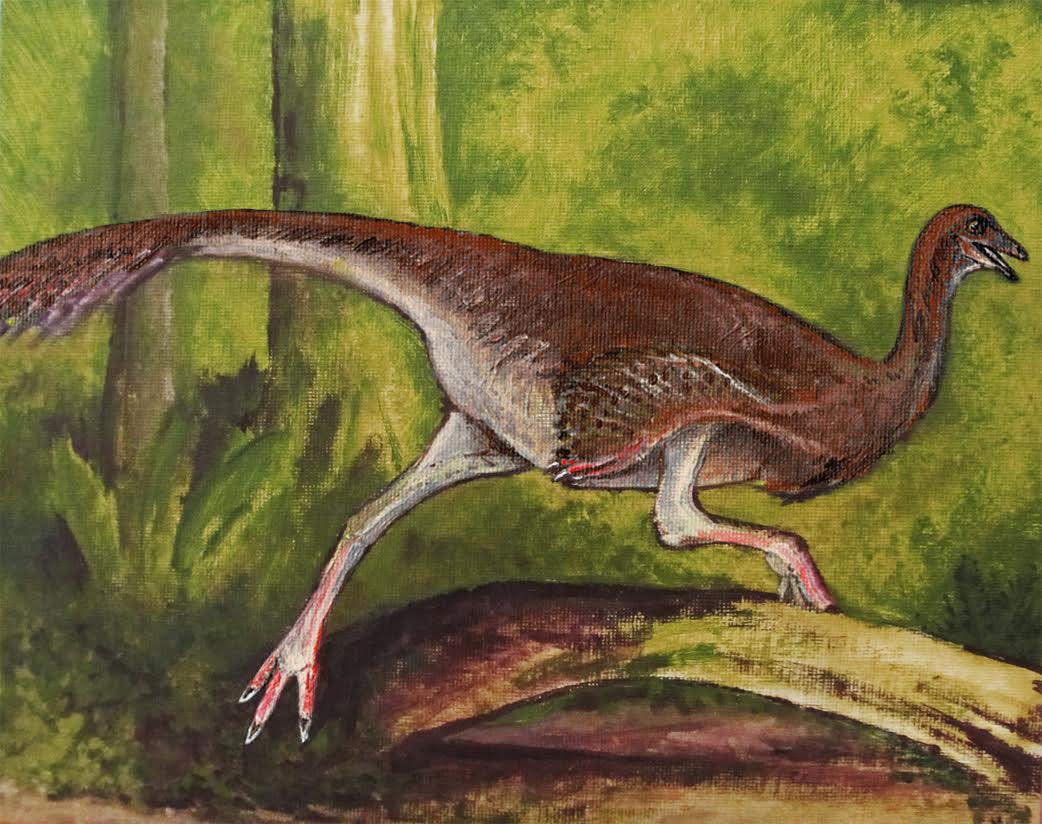After being hidden away from the public since its discovery in Alberta in 1934, an international group of researchers led by Bradley McFeeters, a PhD student at Carleton, have identified the remnants of a dinosaur skeleton as belonging to a previously unrecognized species.
The dinosaur would have looked similar to an ostrich, but with long, fingered arms instead of wings, and a tail, according to a press release. The species would have been just over three meters long, stood one and a half metres tall, and weighed about 90 kilograms, the release said.
The skeleton was collected by fossil hunter Levi Sternberg during an expedition to the Alberta Badlands, and had since been sitting in the Royal Ontario Museum under the catalogue number ROM 1790, lacking any thorough anatomical description. That very lack of description proved to be key for McFeeters’ thesis.
“As I was working on describing the anatomy of ROM 1790, I began to take note of a suite of previously unnoticed features that suggested I was looking at a previously undescribed species,” McFeeters said in an email.
Rativates evadens, as named by McFeeters, is the first new species of ‘ostrich-mimic’ dinosaurs to be found in Canada since 1933. Its skeleton had long been confused with another similar species, Struthiomimus altus, and the new discovery makes it the third of its kind, McFeeters said.
The name Rativates means “foreteller of ratites,” as its body type can be seen amongst other large, flightless birds, such as ostriches. McFeeters said evadens makes reference to its long hind limbs which allowed it to outrun and evade predators.
McFeeters said the team of researchers had to carefully study the dinosaur’s anatomy in order to rule out other explanations for the differences, such as another growth stage of an already existing species.
The dinosaur had a toothless beak and was approximately the size of a person, McFeeters said.
While no skin impressions were found with the fossil, he said similar species’ remains suggest it might have had a downy coat, or even feathers.
The skeleton was found in an ancient river bed in the lower Dinosaur Park formation, near Dinosaur Provincial Park in Alberta.
According to McFeeters, he thinks its habitat would have been “lushly vegetated and home to abundant other dinosaurs, turtles, and crocodilians.”
The dinosaur is believed to have been omnivorous, according to the press release.
McFeeters said he and his team are confident about the findings of their paper, which was published online on Sept. 30.
“We can rarely know with absolute certainty whether two similar dinosaur specimens are members of the same species or not, but so far I haven’t heard from anyone who found our paper unconvincing,” he said.
According to McFeeters, we shouldn’t underestimate the diversity of ostrich-mimic dinosaurs due to the lack of fossils relating to this particular species.
“This can contribute to answering bigger questions about the species diversity in the Later Cretaceous [period] of Alberta and how much of the real diversity is represented in the fossil record.”






